A Tribute to Fall River History: the stories behind our meeting room names
On my first visit to Groundwork in Fall River, I passed a list of familiar names displayed on a chalkboard wall amidst the whorls and eddies of Brooke Mullins Doherty’s artwork.
Sarah, Groundwork’s Co-founder, explained that they were collecting suggestions for meeting room names. Over the next few weeks, more ideas were added to the list, most of which tipped their hat to Fall River’s rich history. The names included Braga, Metacomet, the Spindle, Troy, Granite Room, the Battleship, Quequechan, Lizzie, and Durfee, among others. We ended up with twenty-seven suggestions.
We narrowed it down to four choices for each meeting room, then we sent out a poll asking members to choose up to two favorites.
Our members liked “The Battleship” and “Granite Room” for the large conference room. They liked “the Spindle” and “the Braga” for the smaller zoom room.
In this blog, we will explore the stories behind the names we decided on: Granite Room and Eaton.
A Common Ground
To truly appreciate the significance of our meeting room names, let’s explore the shared history of the two Groundwork locations starting with the cities where they reside.

Despite the often contentious, yet hopefully healing, relationship between Fall River and New Bedford, there is no denying the similarities between these areas. From their shared history as booming mill cities with their influx of immigrant workers, to the eventual downturn in their textile industries and its resulting economic hardships. Fall River and New Bedford may have different “vibes” but they share common ground. That is particularly true right here at Groundwork, where our two locations were once “sister schools” having been commissioned at the same time under the Act of 1895.
At the height of textile manufacturing, Fall River and New Bedford had over a hundred mills between them. Originally, skilled labor was imported from England, while unskilled jobs were usually filled with local residents and immigrants who sought employment opportunities in the growing textile industry.
In order to create its own skilled labor force, mill owners petitioned the legislature to open state-funded textile schools. Three were chartered in 1895 to provide “instruction in the theory and practical art of textile and kindred branches of industry.”
Sister Schools
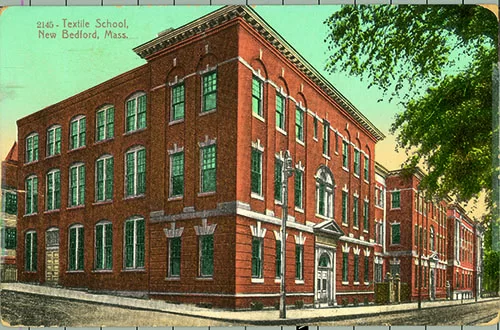
Photo courtesy of UMass Dartmouth
The New Bedford Textile School opened in 1899 and Bradford Durfee Textile School opened five years later in 1904. Both schools went through several iterations and name changes over the years, reflecting the shift in focus from textile schools, to technical schools, to degree-offering institutions.
In 1960, a merger was approved to consolidate the two schools, forming the Southeastern Massachusetts Technological Institute (SMTI), which would eventually become UMass Dartmouth.
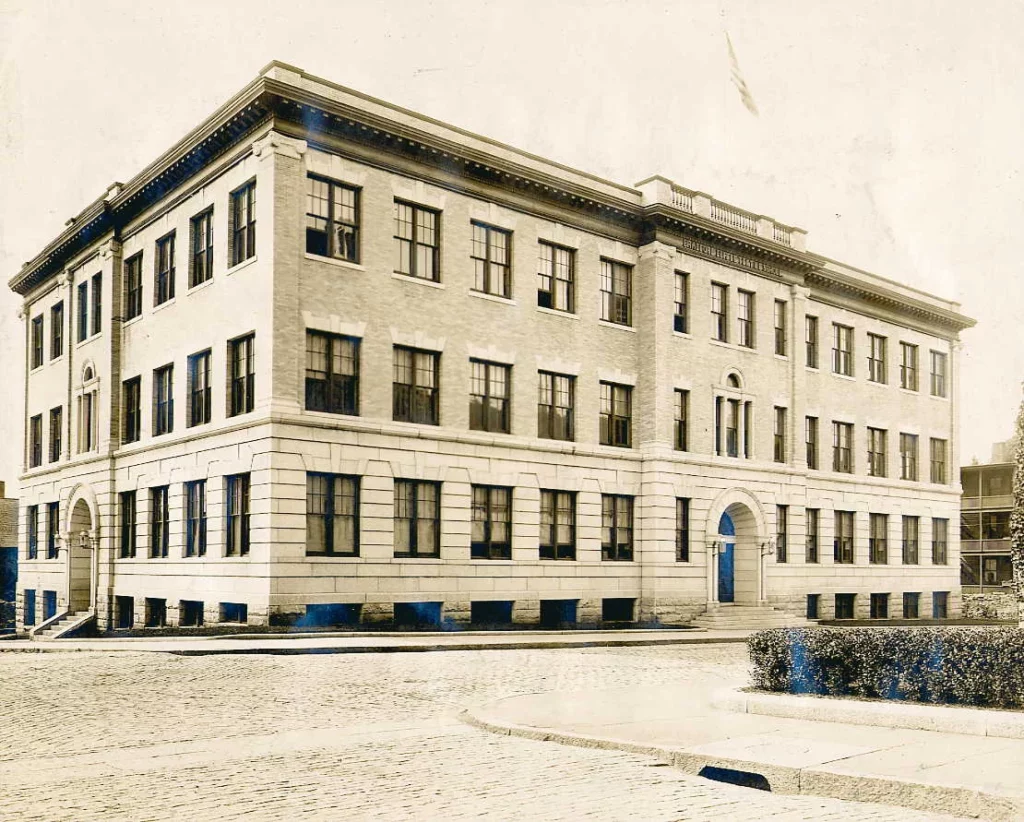
Photo courtesy of UMass Dartmouth
Today, New Bedford Textile School is now called the Quest Center, an initiative focused on providing support and training for entrepreneurs and start ups. The Quest center has been home to Groundwork since 2014. The Bradford Durfee Textile School became The Creative Class, an apartment community with aims to “provide small business incubation, workforce development for the neurodiverse community, and a nonprofit children’s theatre.” Groundwork opened its doors there in October 2022.
That Groundwork should find a home in each of these schools, with their intertwined past, is quite the coincidence. It’s intriguing to think that the bond between these buildings reflects potential for the unity we strive to foster within our two communities and the cities they belong to.
Now that we’ve explored some history of the Groundwork buildings, let’s dive into the stories behind our meeting room names. Starting with Eaton, a name that was not on the original list of suggestions. Eaton came on our radar a bit later, while researching the history of Bradford Durfee Textile School.
Who was Helen Eaton?
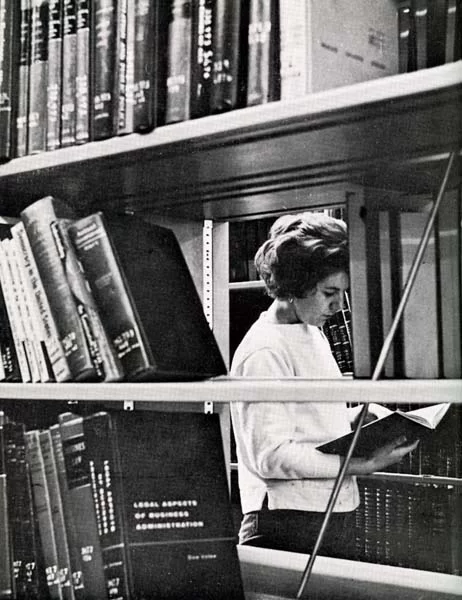
Helen Eaton was not only the first librarian at Bradford Durfee, she was also the first female faculty member. This caused some issues at the time (October 1953, coincidentally the same month that Groundwork found its own place at the former school). It was speculated that her appointment was delayed because they were looking for a male to take on the role.
But Helen’s role at Bradford Durfee went far beyond the library. She also instructed Freshman English and bibliography courses. Three years after becoming the librarian, Helen was promoted to Assistant Professor, she expanded her bibliography courses, and also took on editorial work for the college catalog and student handbook.
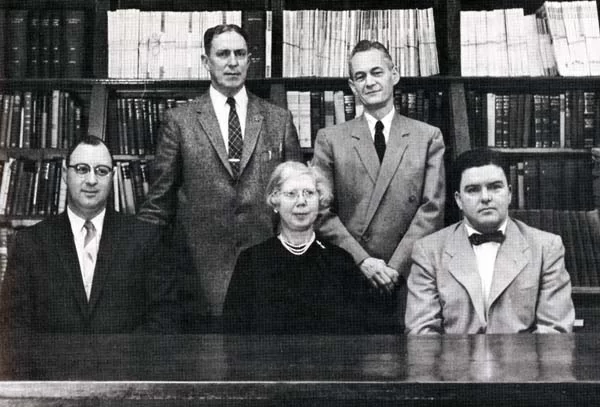
After the merger of the two schools, Helen continued as the librarian at the Fall River Branch until 1964, when she transitioned to full-time Assistant Professor in the College of Arts and Sciences. She eventually became the Archivist of SMTI thanks to her extensive knowledge of Bradford Durfee and its history. She held this position until her retirement in 1972.
Honoring a forgotten story
The pages of history books often highlight the few prominent figures, typically wealthy elites, who shaped society and its communities. However, there are a multitude of other, often forgotten, people who are equally important to the narrative. It’s precisely these unsung individuals that we want to honor, and Helen Eaton stands as a perfect example.
In an era when women were scarce in academic fields, Helen Eaton embarked on her remarkable and successful career at Bradford Durfee. Her pioneering spirit and dedication paved the way for future generations, even as her own story faded into the background.
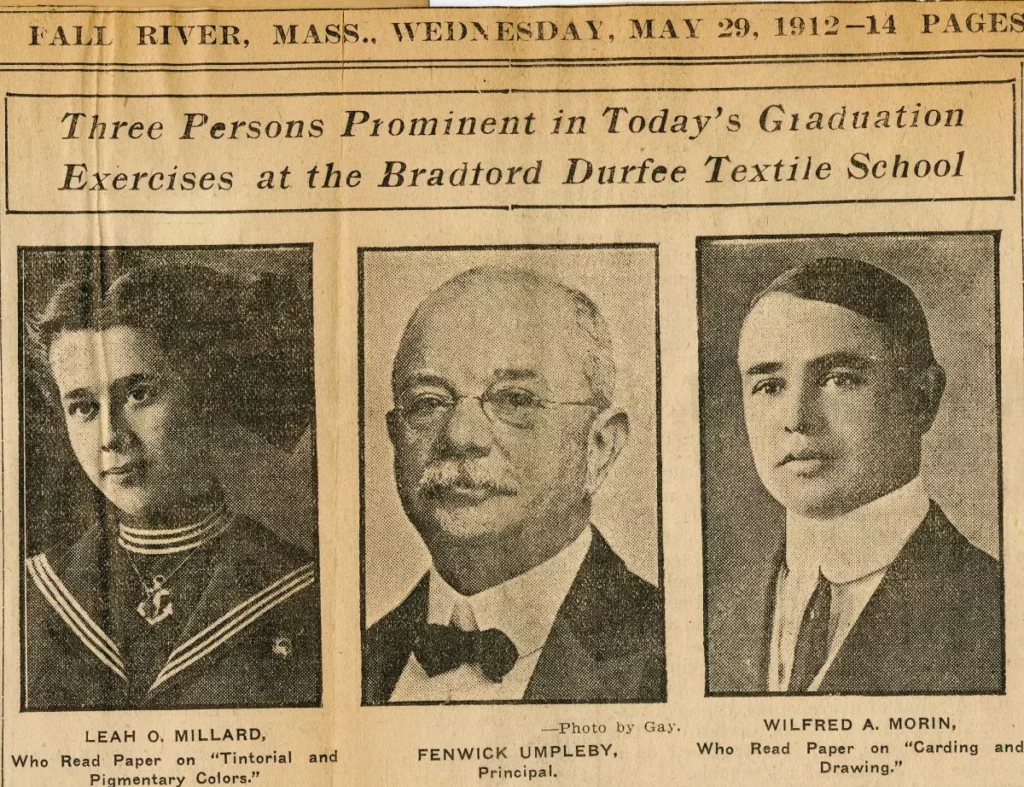
Photos courtesy of UMass Dartmouth
It’s important to acknowledge the countless others who deserve recognition, such as Leah O. Millard, the first female graduate of Bradford Durfee Textile School in 1912. If you’re wondering why we chose “Eaton” over “Millard” it’s as simple as having discovered Helen Eaton’s story first.
What better way to pay homage to Helen than by displaying her name in the very building where she made a lasting impact? By doing so, we celebrate her profound contributions and ensure that her legacy lives on within the community’s collective memory.
That’s the story behind Eaton. What about the Granite Room?
Fall River Granite, from the ground up
“It’s all around- under the city, on the ledges, in the buildings, and in the memory of Fall River. It’s invulnerable granite. The rock everlasting which literally makes the city.” Herald News, 1978
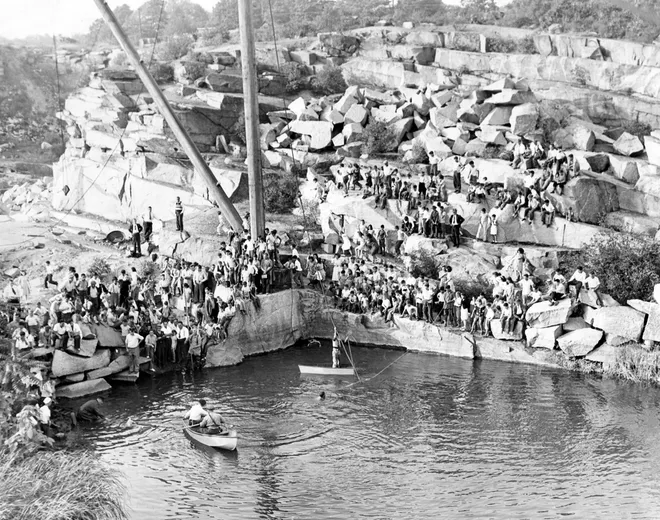
“Granite Room” was one of the most popular names for the large conference room, second only to “Battleship.” We ultimately decided on Granite Room, in part, because Bradford Durfee itself was constructed from Fall River Granite, some of which is exposed in the very conference room that bears its name.
Additionally, the name seemed fitting due to the ubiquity of Fall River Granite in shaping the architecture and industries in the city and its surrounding areas. Fall River Granite was “some of the hardest granite in the world. Created from the collision of the two proto-continents that collided to form the North American plate 600 millions years ago.”
Lastly, there’s something of a shared symbolism between the stone bedrock that Fall River rests on, and the values that Groundwork seeks to uphold.
As Sarah wrote in a recent newsletter,
“Here at Groundwork, we like to network on the ground. Start with your friends. Start with the people working adjacent to you who appreciate what you’re up to. Start with the people who believe in you.”
Compare this to the way many of Fall River’s historical buildings were constructed.
“So omnipresent was Fall River Granite that buildings were often built from stone quarried within their future footprint.” Fall River: A City and Its Stone
Fall River was literally built from its ground up, and that is just how Groundwork operates, seeking to build real and lasting connections right here in the community. To me, the message is clear. Start where you are and with what you have. Fall River Granite, in particular, emphasizes building a foundation, whether cathedrals or community, right where you stand.
What is in a name?
So there you have it. The next time you step into a Groundwork meeting room in Fall River, whether Granite Room or Eaton, remember the deeper meaning behind their names. Eaton reminds us that every person’s story matters. Fall River’s granite represents the building of a strong foundation, particularly by starting in the very community you seek to serve. And the shared history of our buildings reminds us that, despite our difference, we are connected by a common story, and a common ground.
Check out Part One of Dan Moriarty’s blog series to learn more about the history of the textile industry in the SouthCoast.
- How our core values create a stronger coworking community - November 11, 2024
- How to be a good member at a coworking space - September 19, 2024
- Silent Book Club & the value of reading alone, together - April 30, 2024
